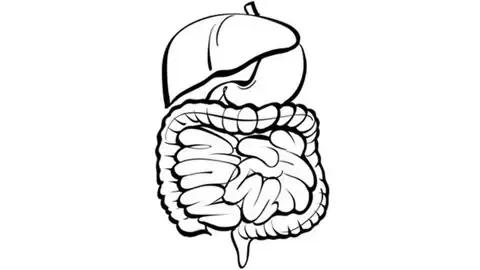Pancreatic cancer anatomy concept, malignant tumor of pancreas: © Лилия Захарчук – stock.adobe.com
ELI-002 2P, a lymph node–targeting amphiphile peptide–based vaccine, improved relapse-free survival (RFS) in patients with KRAS-mutated pancreatic ductal adenocarcinoma (PDAC) and colorectal cancer (CRC) correlated to a tumor biomarker, according to results from a phase 1 study published in Nature Medicine.1
At a median follow-up of 19.7 months, the median overall survival (OS) was 28.94 months, and the median radiographic RFS was 16.33 months in patients who received ELI-002 2P after locoregional therapy. Crucially, investigators identified that patients with a T-cell response above a 9.17-fold threshold had significantly superior outcomes to those who did not.
Targeting the KRAS G12D and G12R mutations, ELI-002 2P is designed to deliver peptide antigens and amphiphile-adjuvant CpG-7909 to the lymph nodes to enhance KRAS-specific T-cell activation and amplification. Earlier reporting from the phase 1 AMPLIFY-201 trial (NCT04853017) established the safety and immunogenicity of ELI-002 2P.2
Twenty-five patients at 7 centers in the United States were enrolled to receive ELI-002 2P with fixed doses of the antigen peptides and escalating doses of Amph-CpG-7909, 20 of whom had PDAC and 5 of whom had CRC. Patients had high-risk stage I, II, III, or oligometastatic stage IV PDAC or high-risk stage II, III, or oligometastatic stage IV CRC. All patients had positive minimal residual disease (MRD) or after locoregional therapy. The primary end point was safety and secondary end points included reduction in circulating tumor DNA (ctDNA) and/or serum tumor antigen levels.
Patients received 6 subcutaneous doses of ELI-002 2P over 8 weeks followed by 3 months of observation, then 4 weekly doses of ELI-0002 2P. They were followed for up to 2 years after the first dose of ELI-002 2P.
No dose-limiting toxicities were observed and a recommended phase 2 dose of 10.0 mg of Amph-CpG-7909 was determined. At the initial data cutoff with 8.5 months’ median follow-up, 21 of 25 patients had mutant KRAS (mKRAS)-directed T-cell responses, with CD4+ and CD8+ T cells in 71% and responses to all 7 mKRAS antigens were present in 57%. All patients who received the 2 highest dose levels had T-cell responses.
With longer follow-up, post hoc analyses of immunogenicity and clinical outcomes were reported.1 In the PDAC cohort, median RFS was 15.31 months, and median OS was 28.94 months, which was consistent with the full cohort that also included the 5 patients with CRC.
Using an exploratory receiver-operating characteristics analysis, investigators identified the 9.17-fold threshold in T-cell activation that separated patients with better or worse outcomes, after previously reporting outcomes based on the median of 12.75-fold change from baseline. With the new analysis, 17 patients (68%) had better outcomes and 8 (32%) did worse. All 8 of the patients with T-cell change below 9.17-fold experienced radiographic progression and 7 had died. However, 11 of the 17 (65%) with greater change in their T cells had no radiographic progression, 5 required no subsequent therapy and 6 received subsequent chemotherapy based on tumor biomarker increase but remained free from disease progression. There were 6 patients in this group who had complete ctDNA clearance.
Investigators calculated an increase in relative risk of radiographic progression or death of 2.96 for the below-threshold group. The median RFS was not reached vs 3.02 months for the above- and below-threshold groups (HR, 0.12; P = .0002). The median OS was not reached in the above-threshold group vs 15.98 months in the below-threshold group (HR, 0.23; P = .0099). The investigators compared these outcomes favorably to the historical progression of patients with MRD-positive PDAC after resection.
The immunogenicity analyses also showed antigen spreading patient-specific neoantigens not included in ELI-002 2P. T-cell response to nonvaccine antigens were expanded from baseline levels in 67% (6 out of 9 patients) of evaluated patients, and 13 of 52 evaluated neoantigens showed increased T-cell responses. Five of 6 patients with antigen-spreading responses were those with responses above the 9.17-fold threshold.
No new safety signals were reported at the time of this analysis; common treatment-related adverse events previously observed included fatigue, malaise, diarrhea, abdominal distention, and abdominal pain.
A 7-peptide formulation, ELI-002 7P, is also under investigation to target a greater number of KRAS mutations. It showed robust responses in the phase 1 AMPLIFY-7P trial (NCT05726864) and a randomized phase 2 trial is underway in the adjuvant setting for PDAC.
“The updated phase 1 AMPLIFY-201 data further demonstrate that the AMP platform has the potential to provide durable benefit to [patients with] PDAC in the adjuvant setting,” said Chris Haqq, MD, PhD, chief medical officer of Elicio Therapeutics, in a press release.3
References:
1. Wainberg ZA, Weekes CD, Furqan M, et al. Lymph node-targeted, mKRAS-specific amphiphile vaccine in pancreatic and colorectal cancer: phase 1 AMPLIFY-201 trial final results. Nat Med. Published 11 August 2025. doi:10.1038/s41591-025-03876-4
2. Pant S, Wainberg ZA, Weekes CD, et al. Lymph-node-targeted, mKRAS-specific amphiphile vaccine in pancreatic and colorectal cancer: the phase 1 AMPLIFY-201 trial. Nat Med. 2024;30(2):531-542. doi:10.1038/s41591-023-02760-3
3. Elicio Therapeutics announces publication of ELI-002 updated AMPLIFY-201 phase 1 follow-up data in nature medicine for minimal residual disease (“MRD”) positive, adjuvant-stage patients. Elicio Therapeutics. News release. August 12, 2025. Accessed August 12, 2025. https://elicio.com/press_releases/elicio-therapeutics-announces-publication-of-eli-002-updated-amplify-201-phase-1-follow-up-data-in-nature-medicine-for-minimal-residual-disease-mrd-positive-adjuvant-stage-patient/
